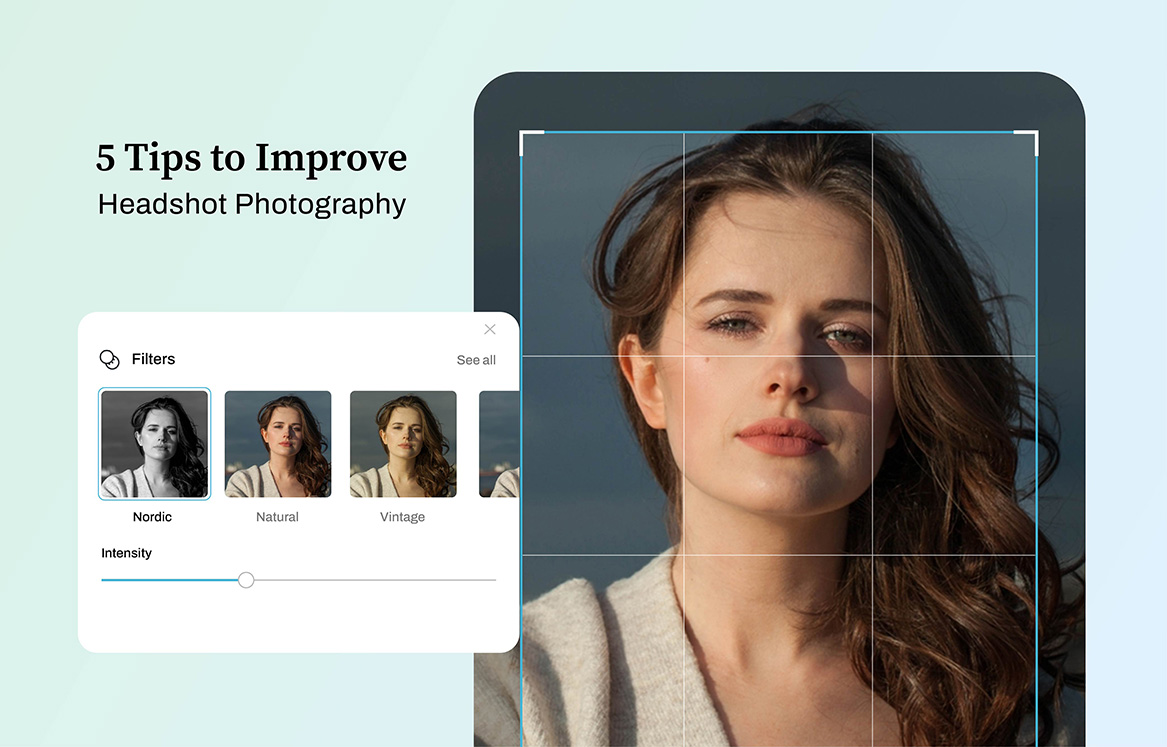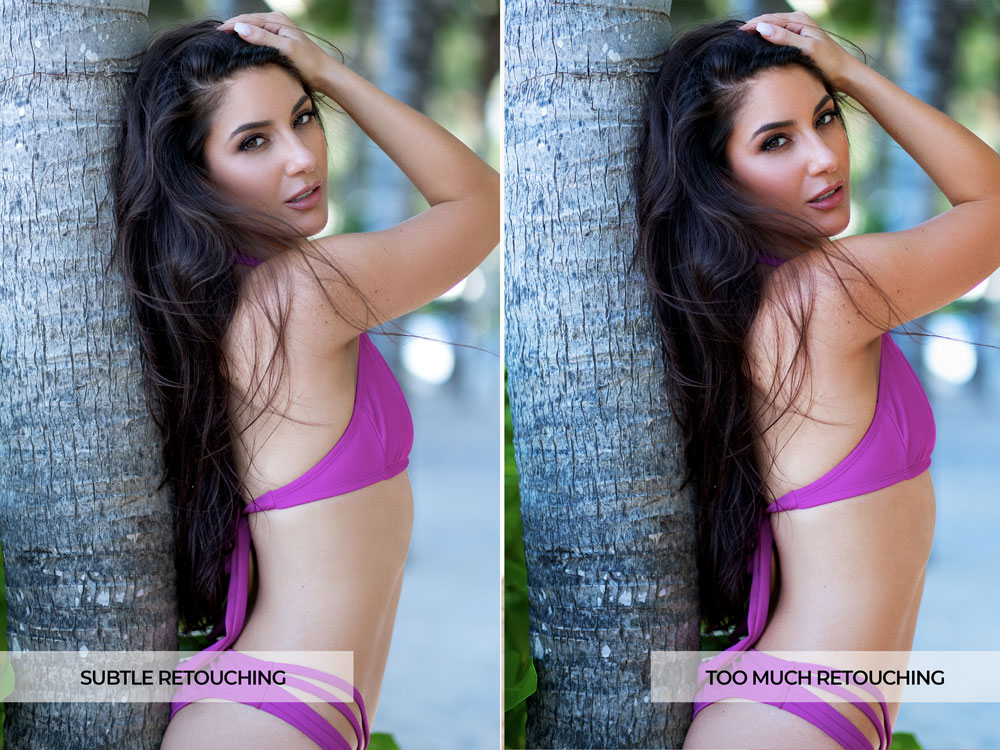
While Photoshop is undeniably helpful to many industries, it has gained a negative reputation throughout the years. This is most especially true in portrait photography where it can be easy to go overboard with the idea overload that one might discover from photoshop tutorials they come across. Photoshop is one of the many ways where anyone can be creative and come up with something such as different portrait editing styles. Some of the Photoshop and Lightroom portrait retouching techniques are so good that they make the photos too perfect to be true. It is, however, possible to do portrait retouching in Photoshop without ending up with an unrealistic image.
-
- Table of Contents
- 6 Mistakes to Avoid
In this article you’ll learn and be able to pinpoint the most common mistakes done with portrait retouching in Photoshop.
6 Mistakes to Avoid When Doing Portrait Retouching
Are you doing the same mistake when doing photo retouching by yourself? Are you noticing the same mistakes being applied to some images you’ve seen? It is important to know what you missed and what you overdid to avoid doing them in the next photo editing session you are going to get done.
1. High Saturation
While deeply saturated colors look nice on nature photographs, it does not go well with portraits. Overly saturated colors often make skin look unrealistic and actually less flattering.
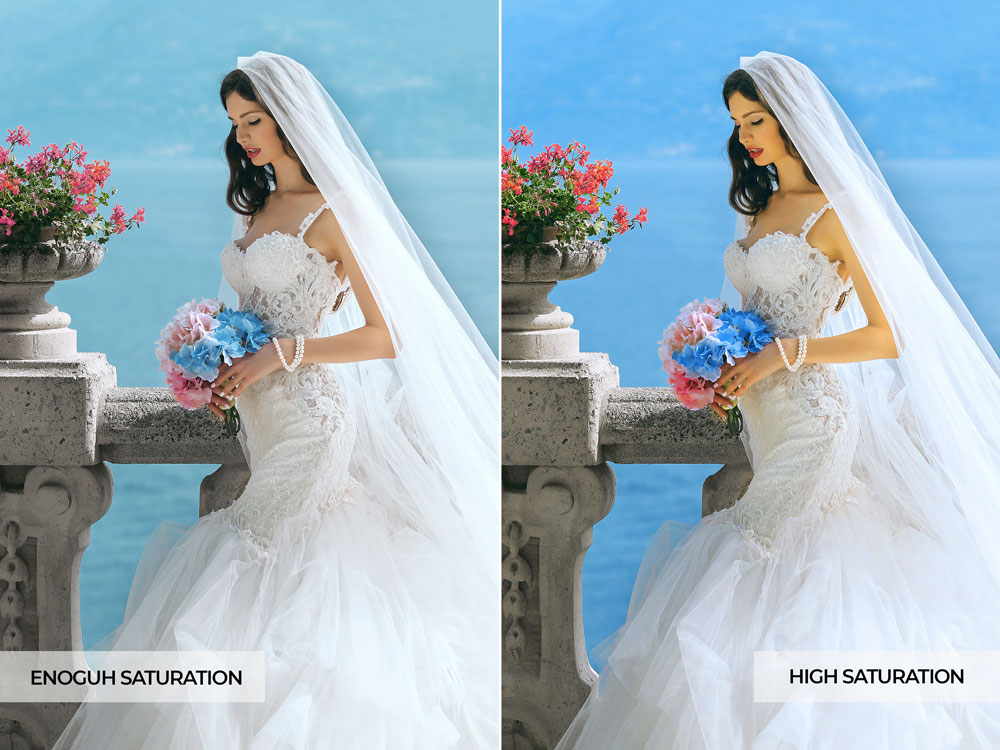
This is what you can do. If you want to make the portrait image pop, adjust the color saturation of the model’s dress and not the skin. You can use the masking techniques to isolate the skin from the skin and work on the adjustments slowly until you achieve the desired effect without risking the genuine quality of the model.
2. Over Skin Smoothing
In commercial photography, it is typical to see porcelain-smooth skin on the models. They are promoting a product thus the need to look immaculate in photos. This is also the reason why models are given the impression of looking perfect. In portraits, however, such a standard does not apply because the goal of presenting a portrait is to show the “real” person and not someone who has been edited to perfection.
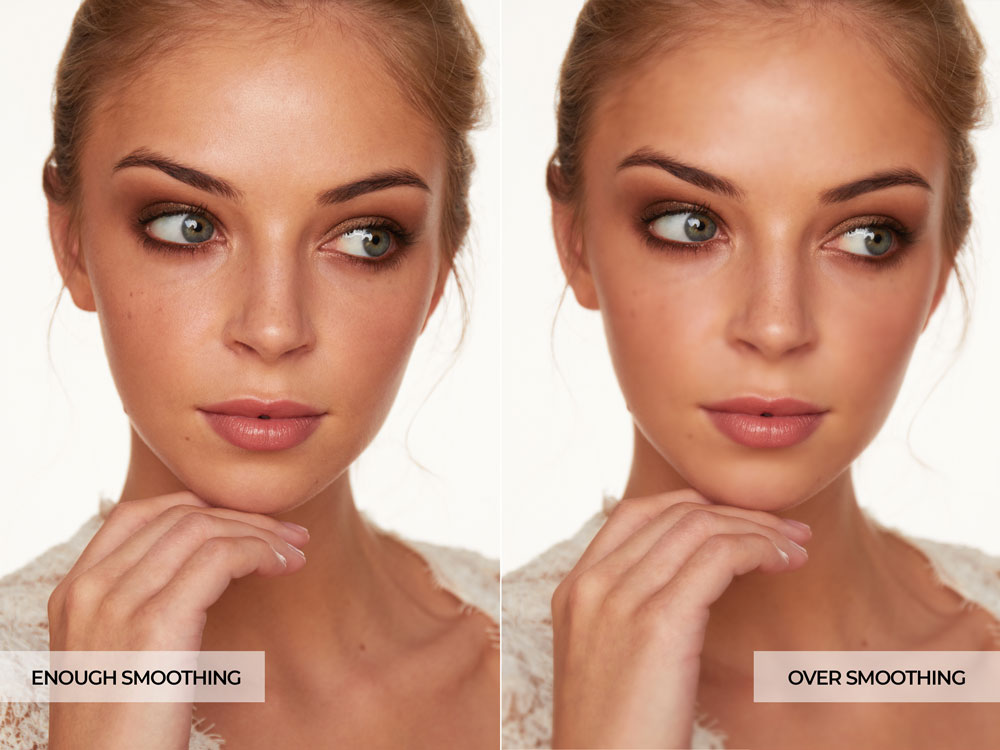
One way to avoid over smoothening the skin in portraits is by deciding whether it is needed in the first place. When taking portrait photos, photographers make sure to use lights that are flattering to the model. This means that in most cases, photos look brighter and the skin already looks more refined than in actual. By smoothening the skin further, you risk the possibility of producing unreal results. If needed, the skin smoothening process should be light so that the original skin texture will not end up looking plastic.
3. Too Much Reshaping
What most photo retouchers modify on portrait photos are the facial features of the model. They try to reshape the features in order to make the model look more appealing. Specific areas that are commonly reshaped too much are the following:
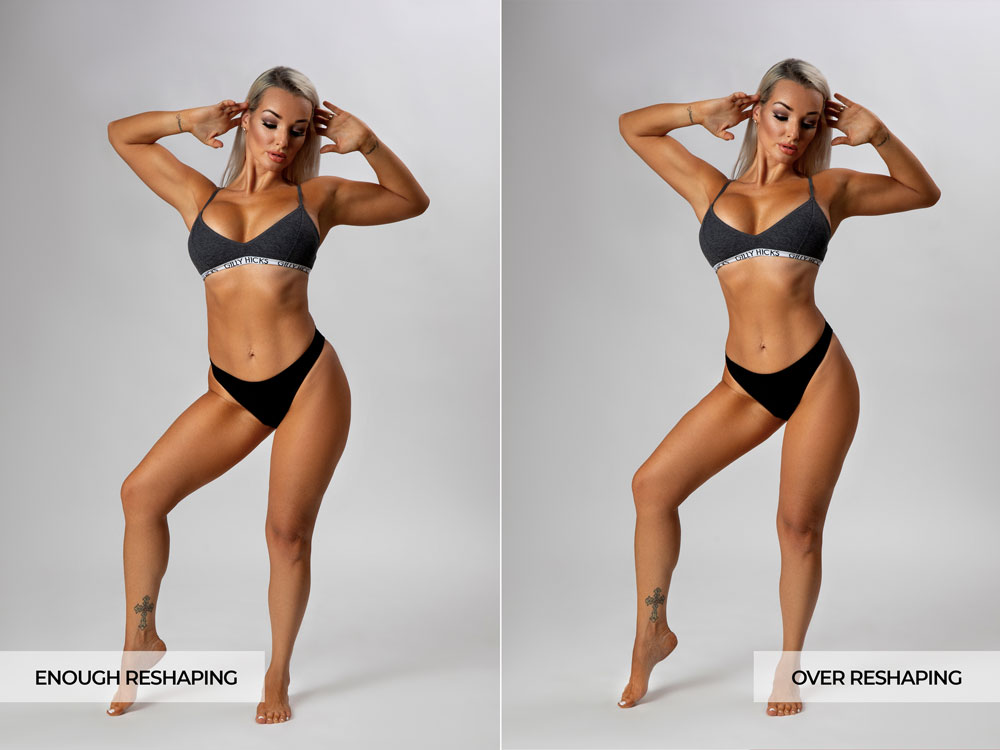
Making the model’s eyes bigger. Large eyes give the impression of being curious which is why most people find them more attractive. Aside from the size, some adjustments will also make the eyes look brighter or sharper. While the reasons to reshape and adjust the eyes’ luster are legit, it is also just another way leading to a model looking fake. One way to check is to zoom in to the picture to see whether the subtle changes make the eyes realistic or otherwise.
Thinning or Thickening of the lips. Some people look great with thin lips and some prefer having a fuller pout. While this can be achieved in Photoshop and is perfectly acceptable for some photograph genres. But it is better to stay neutral when it comes to portraits. When we say neutral, this means avoiding the mistake of reshaping the lips too much to the point that it makes the model look like a totally different person. Always keep in mind that the goal of a portrait retouch is to enhance the photo and not make drastic changes that remove its authenticity. Instead of reshaping the lips, you can instead use highlights and shadows to define them so that they look better but not different.
Slimming the face. Aside from the facial features, it is also common to reshape the entire face using Photoshop. Some portraits are close up photos that make people uncomfortable. There is nothing wrong with looking a bit chubby or too thin but there are those who would prefer to be at their best in photos. The liquify technique is often used to reshape the face in Photoshop. It will allow you to make the face either slimmer or chubbier. Dragging the face too far, however, will change too much. Any exaggerated alterations in the facial shape do not look flattering at all in portraits compared to a subtly applied effect that only enhances or helps build the character.
Reshaping the other parts of the body. The face is not the only area that can be reshaped using Photoshop. For full body shots, the same techniques in reshaping the facial features can be used to change the body’s shape. Just the same, too much can make the body look awkward and unnatural thereby destroying the photo instead of enhancing it.
4. Too Much Application of Digital Makeup
The beauty of a digital makeup is that it allows anyone to look properly made up in photos without actually having to sit in a makeup chair for hours. It is also used to correct makeup blunders due to bad studio lighting.
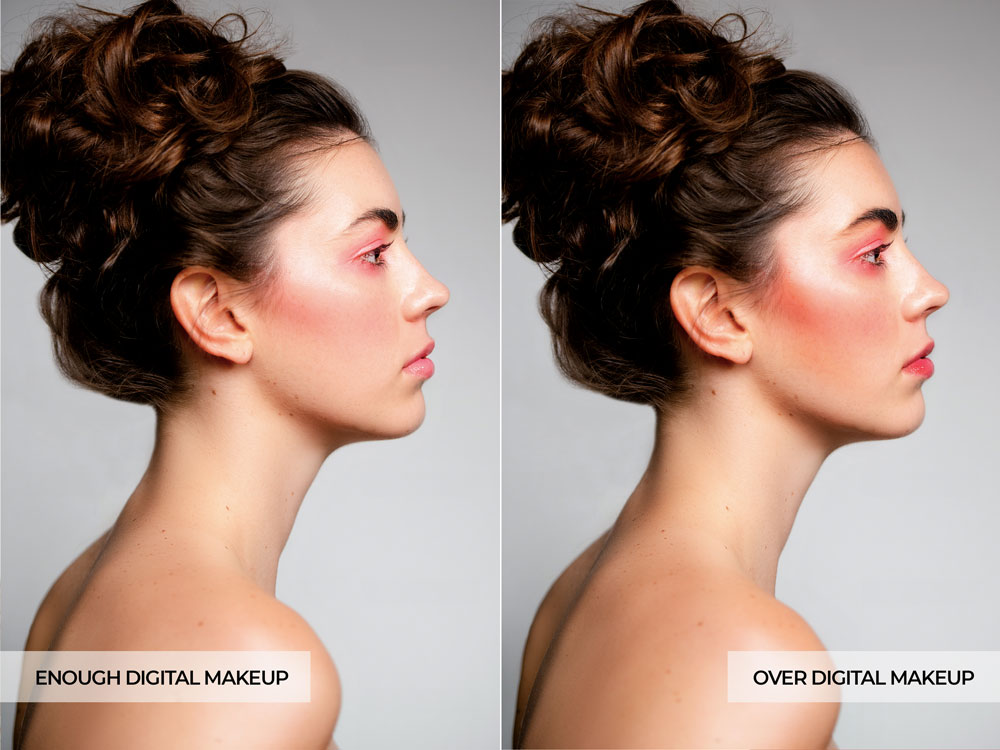
Digital makeup is the best solution for some situations but it could also make everything go down the hill. To avoid making this mistake, it is best to stay with a theme. If you prefer formal portraits, the best route is to keep everything neutral. Use earth colors that enhance facial features and give the portrait more warmth. If you like fun and lively portrait, you can play with bright hues but not too much since it can also remove the essence of looking natural. If your goal is to make the model look alive and healthy, apply subtle shades and blush hades to the lips and eyes. You can never go wrong with a plan and sticking to the most effectiveretouching techniques.
5. Too Much Clarity & Texture
In some photos, textures and clarity matter because they add a new dimension to the details. In portraits, however, it means over emphasizing blemishes, wrinkles, and other skin imperfections.
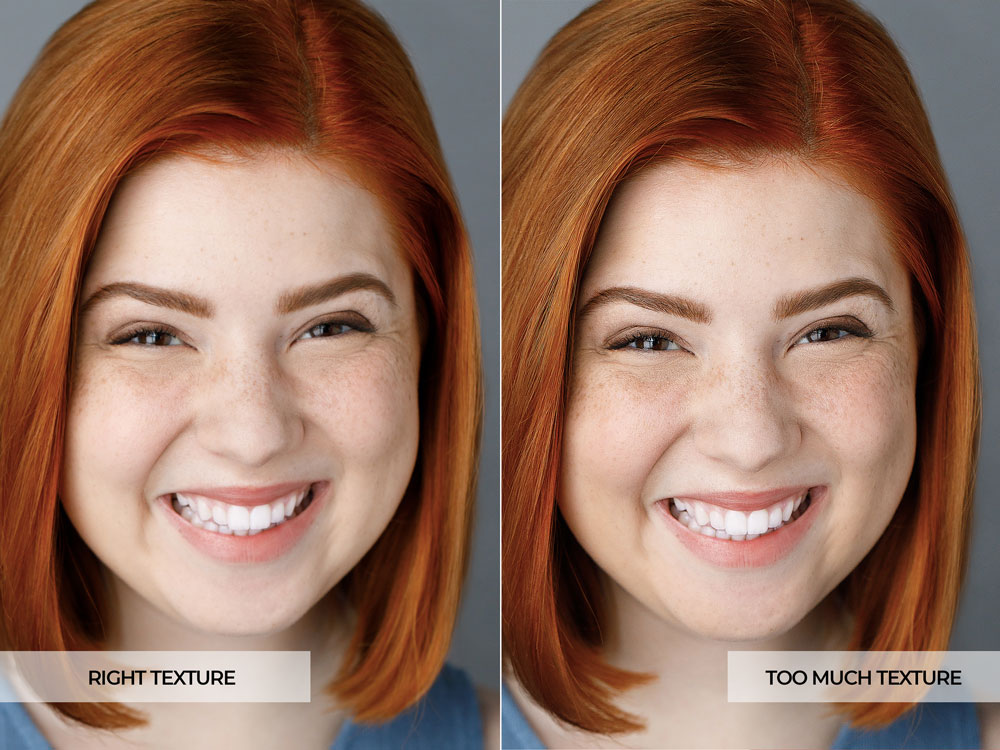
Every portrait is different and some would like to make it more interesting by using textures. What you can do to avoid too much clarity and texture is to judge the needs of each portrait. Is the portrait meant to be rugged? Then a lot of texture would be fine. A little smoothening is needed, however, for photos that are meant to look more formal.
6. Over Sharpening & Contrast
Sharpening and adjusting the contrast are other ways of defining the details and making the picture look alive instead of appearing flat.

It is also easy to get overboard with these techniques and you will have over-sharpened edges or badly contrasted images. To avoid this blunder, sharpen and use contrast selectively. Check which parts need adjustments and use masking to leave the rest of the photo untouched.
Bottomline
Portrait retouching is acceptable as long as it is done with subtlety. You do not want to make these photo retouching mistakes or else you will end up having photos that attract attention for the wrong reasons. The best approach is to always spend time studying Photoshop and its tools. You will lessen the risk of getting carried away in retouching portraits if you are familiar with how each of the effects can create a difference in the photos. It is suggested to take a light hand in retouching portraits because it is how you can produce portraits that look naturally alive.
Don’t have time to study Photoshop and you seem to always end up with fake-looking portraits? You can always collaborate with Ephotovn for your portrait retouching needs. Only Ephotovn can provide a professional and fast option if you want to have portrait photos that look amazing but still realistic.
Contact us today so we can discuss how we can improve your portraits.



